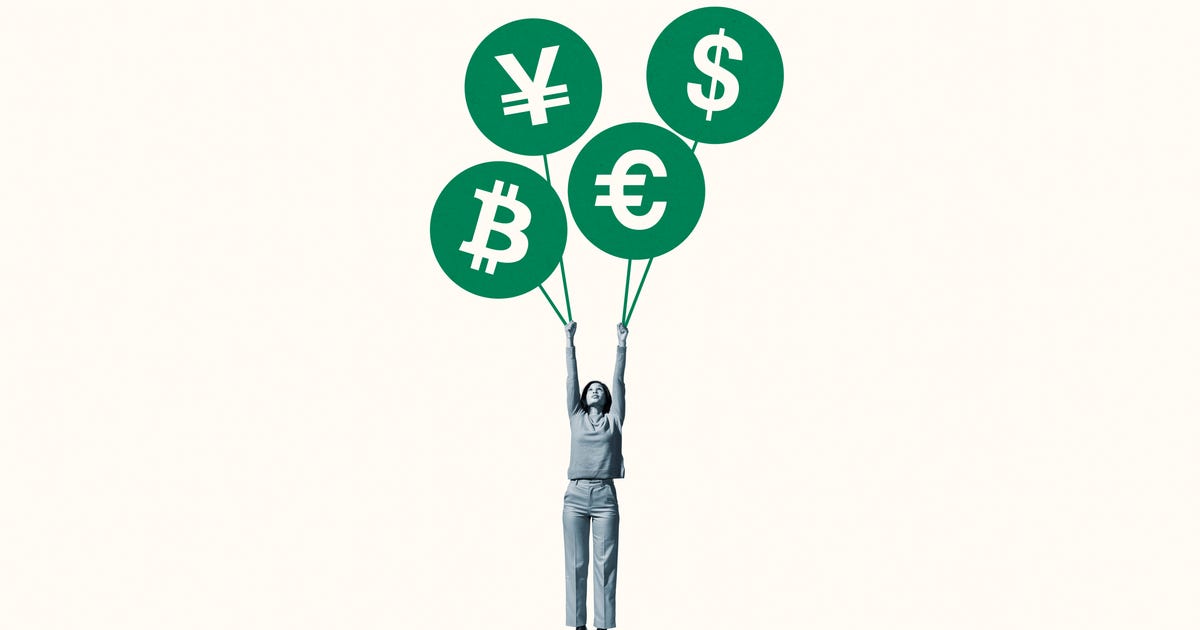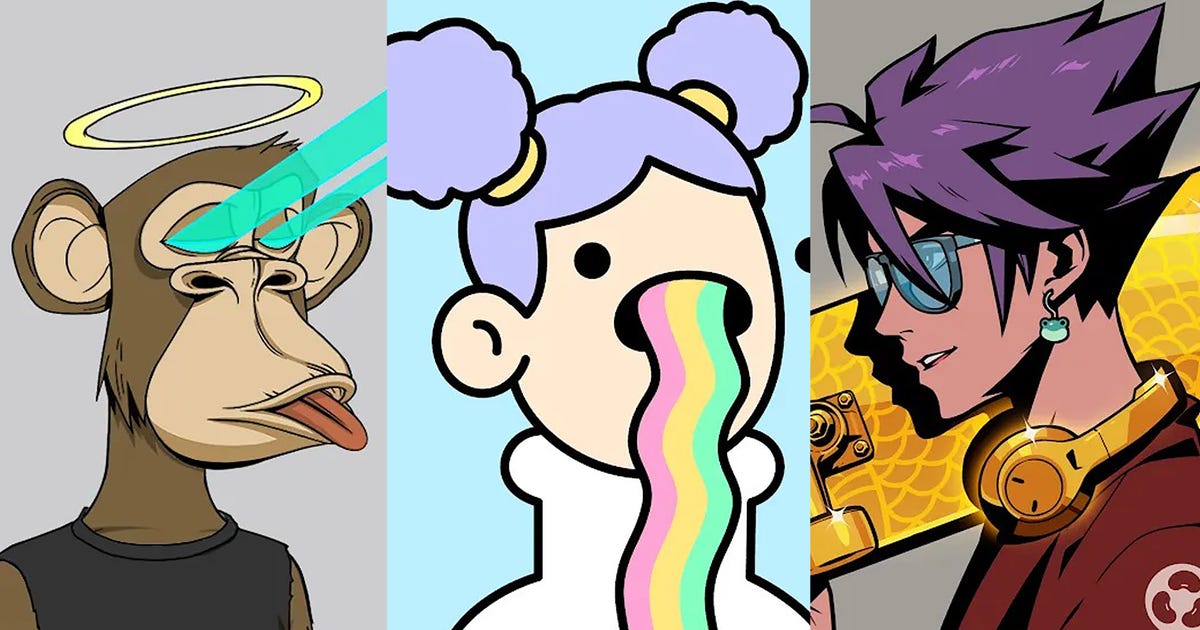
Blockchain-Backed Aid Groups Could Be the Future of Philanthropy
A month after Russian troops invaded Ukraine, an organization called Gitcoin raised over $800,000 for initiatives to support Ukraine with protective equipment, food and aid. It's one of many causes that Gitcoin and other so-called impact DAOs are funding through blockchain technology.
Impact decentralized autonomous organizations, or impact DAOs, use crypto tools as a source for public good and an alternative way to support social causes. Consider it the blockchain version of a nonprofit.
Ukrainian aid, the fight for reproductive rights and efforts to reverse the effects of climate change are all getting aid from impact DAOs to rally support.
These organizations aim to correct what they see as the institutional underfunding of public initiatives and causes. A DAO (pronounced "dow") is a fancy way of saying that it is a self-governing body that makes decisions based on community votes rather than executive decisions. Anyone who buys tokens for a particular DAO is able to vote on what decisions the organization makes, like what social issue to donate funds to.
Crypto enthusiasts have created DAOs for everything from building high-status friend groups to buying the Constitution. With impact DAOs, however, the mission is more philanthropic -- and ambitious.
In theory, impact DAOs and similar cryptocurrency projects seek to correct the failings of traditional institutions by funding public goods that go undersupported in society. They have been created to support everything from reproductive rights organizations in Texas to aid for climate change. Impact DAOs run counter to the idea that everything related to cryptocurrency is about making a quick buck.
In practice, it's a bit muddier. Impact DAOs and blockchain projects focused on aid represent a novel way of disrupting long-standing acceptance of how philanthropy and giving work. Still in their infancy, they face barriers to accessibility and a general distrust from the public due to the volatile crypto market. It's just one of the many ways the crypto world intends to overhaul the status quo.
A new philanthropic model
DAOs have been around since 2016, but in 2021, right when cryptocurrencies like bitcoin and ether were topping new all-time-high valuations, there was a shift. More Web3 and cryptocurrency enthusiasts began to imagine how virtual technologies could have a more tangible, positive impact on society, Scott Moore of Gitcoin explained.
Moore and co-founder Kevin Owocki created Gitcoin in 2017 to fund software developers creating the foundation for Web3, which blockchain proponents dub the next generation of the internet. The nebulous idea broadly refers to a decentralized internet deeply integrated with crypto and NFTs.
Even though Gitcoin began as an impact DAO for funding software, in the years since, it's funded causes associated with climate change, aid for people in Ukraine, and arts and culture.
"We want to make the case that Web3 public goods are more than just infrastructure," Moore said. "They're things like the climate we live in, our health and wellness, and the diversity of our community. We can't just exist in this metaverse. We need to actually have impact in this world as well."
Because a community of members decides what issues an impact DAO will fund, Moore believes it's more egalitarian than an individual coming in with a donation or a new technology for an underserved community and directing how to use or spend resources.
Since these donations take place on the blockchain, another benefit of the impact DAO model is increased transparency and community oversight, said Robbie Heeger, president and CEO of Endaoment, a crypto donation platform. The blockchain is a public ledger, meaning anyone can see who donated how much, and who voted for what.
Hefty amounts of money have been raised by impact DAOs and traditional nonprofits on Endaoment, with around $3 million donated for Ukraine Humanitarian Aid, around $2 million for physics-related research and experimentation and around $500,000 for reproductive rights.
"There's this conception that all of this stuff is out there and going to happen in the future. I really get the impression, from our vantage point, that not only are impact DAOs a real thing happening now, raising significant amounts of money, but they are also overhauling conventional philanthropic systems," Heeger said.
20 more steps
But developing relationships with trustworthy local organizations that won't take advantage of disenfranchised communities is a key part of philanthropy work that's important to establish and something that impact DAOs need to work on.
That's according to Devin Mathias, who as the senior director of development for the Center for Disaster Philanthropy, has spent his whole career in the nonprofit world consulting or working with philanthropic groups.
"I feel like part of what the general crypto world and environment wants is, at their core, to disrupt," Mathias said. "There's times that can be great and that can be effective. There's times it's going to only cause more problems and make things harder."
Mathias is open to new ways to simplify philanthropy. But the charity process requires time and effort to weed out organizations that can't be trusted and develop relationships with ones that can. He worries impact DAOs may move too indelicately for the charity process.
Mathias noted that, on paper, it may be attractive to donors that these DAOs are providing communities with potential answers to these infrastructural issues, but it could also further complicate existing problems.
"You just created 20 steps for [the community] to go from receiving a gift to actually helping them," Mathias said. "There's a lot of power in just giving cash to the right people, so they can go from zero to impact quickly."
Beyond the DAO
There are a few other hiccups funding public goods through impact DAOs will have to work through before gaining widespread acceptance. People can generally understand the big picture, but relaying the details of the technology is thornier, said Darrell Jones III of developmental Web3 infrastructure organization city3.
Jones is trying to create a thriving, hyperlocal community in Oakland, California, by developing Web3 tools, like a local cryptocurrency called Oak. city3 isn't a DAO, but Jones partnered with impact DAO Gitcoin to create a community funding process as a form of governance to determine which local nonprofits the community would want to fund. The project is still in development, but city3 has been working with Oakland residents to participate.
The language and digital tools around cryptocurrency and Web3 are particularly inaccessible to folks outside of the ecosystem, Jones said. Another hurdle the crypto community will have to overcome is gaining the trust of the communities it wants to serve, not to mention the fact that most people don't have crypto wallets to store digital coins.
"The specifics are harder for folks to grasp. And then using the technology the way it is today is even more challenging," Jones said. Jones stressed that they are working on these issues, and city3 is still in the early developmental stages.
Endaoment's chief operating officer, Zach Bronstein, also noted that it's not just about getting these new ideas into people's heads; it's also about changing the narrative around crypto itself from a get-rich-quick scam to an effective way to fund causes and communities.
"The more that there exist things in cryptocurrency that feel juvenile or scammy, that makes it less likely that people will be willing to participate in this space," Bronstein said. "So the more mature that this space gets … the easier time that we're going to have creating tools that benefit nonprofits in a real, tangible way."
The real world
Some of the skepticism around this new technology is justifiable. With the collapse in value of several cryptocurrencies and a new, exclusionary technology being pitched as a salve for real-world issues, it's reasonable that many are casting a critical gaze at DAOs.
Even when it fulfills its purpose of raising funds for different causes, the results can raise some eyebrows.
When Gitcoin initiated rounds to raise money for Ukraine, there was a disparity in the number of contributions for donations that could immediately help Ukrainians in comparison to the kind of causes that excite crypto donors. For example, in Gitcoin's 13th funding round, there were opportunities to fund aid in Ukraine, climate and ethereum infrastructure. An accounting tool that protects privacy got a vast majority of contributions, with only a fraction going to more practical needs like protective equipment. The funding came just a month into the conflict.
"There's been too little research and too little interest in serving people that may be skeptical of Web3," said Gary Sheng, co-founder of Dream DAO.
A former Google software engineer, Sheng co-founded Dream DAO with a vision to empower young people from all over the world to use Web3 for good, but now he's "unplugging from responsibility" after leading Dream DAO through its first six months. Sheng said he wants to better understand how impact DAOs can be used for people outside of the Web3 world, where "normal people are and where our grandmas are."
"If Web3 isn't greatly improving the lives of a lot of people who may really not like Web3," Sheng said, "it is not realizing its full potential."
Source


